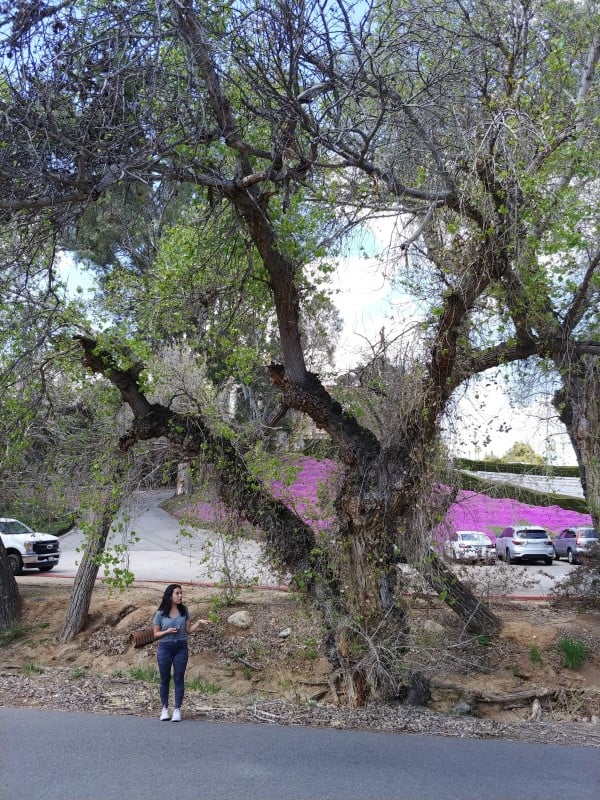University of Redlands Emergency Alert System
Alert Received: . For more information, visit: https://www.redlands.edu/alert/
University of Redlands
- Home
- Trees
- Species Accounts
- Fremont Cottonwood
Common Name: Fremont Cottonwood
Scientific Name: Populus fremontii
Family: Salicaceae
Identification:
Habit: Populus fremontii is a deciduous tree that has an open habit with thick, broadly spread branches.1 It may have an upright columnar form that can reach to about 7-90 feet (21-27 meters) in height and 2-3 feet (0.6-0.9 meters) in diameter.1 The habit can appear oval, roundish, or as an umbrella. Their life span can be more than 130 years.1
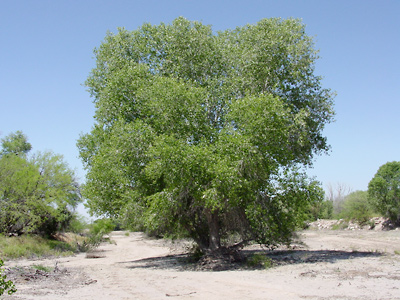 Figure 1. Populus fremontii
Figure 1. Populus fremontii
Leaves: The shiny leaves are triangular or heart-shaped with rounded teeth at the edges and white veins (Figure 2).1 The blades of the leaves are 1.18-2.76 inches (3-7 cm), are a yellow-green color in the summer, and can have a milky resin. During the fall, the leaves appear as a golden-yellow (Figure 3).7
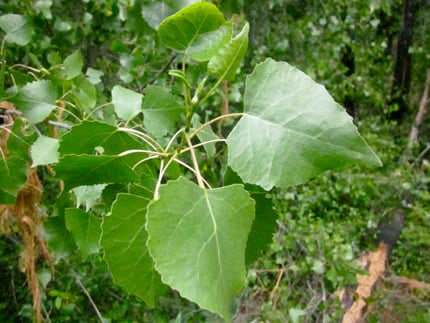 Figure 2. Heart shaped leaves with crenate edges (Steven Harper, 2014)
Figure 2. Heart shaped leaves with crenate edges (Steven Harper, 2014)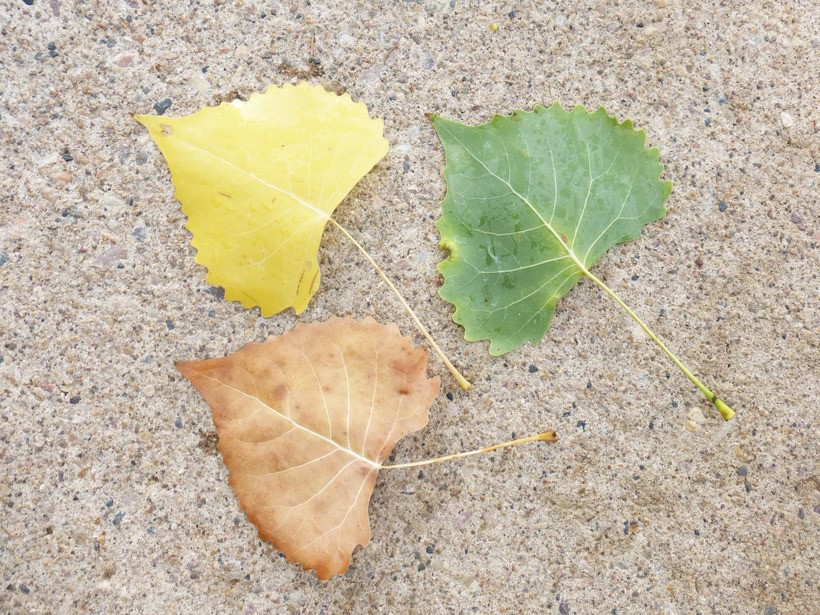 Figure 3. Leaves throughout the seasons7
Figure 3. Leaves throughout the seasons7
Twigs & Bark: Young trees have smooth branches and bark (Figure 4), while bark of older trees become cracked (Figure 5).1 The bark is light green and turns a whitish, light gray when it matures. The trunk can grow up to 39.4 to 114.8 feet (12 to 35 meters) in height, and have a diameter of two to three feet (0.6 to 0.9 meters).1
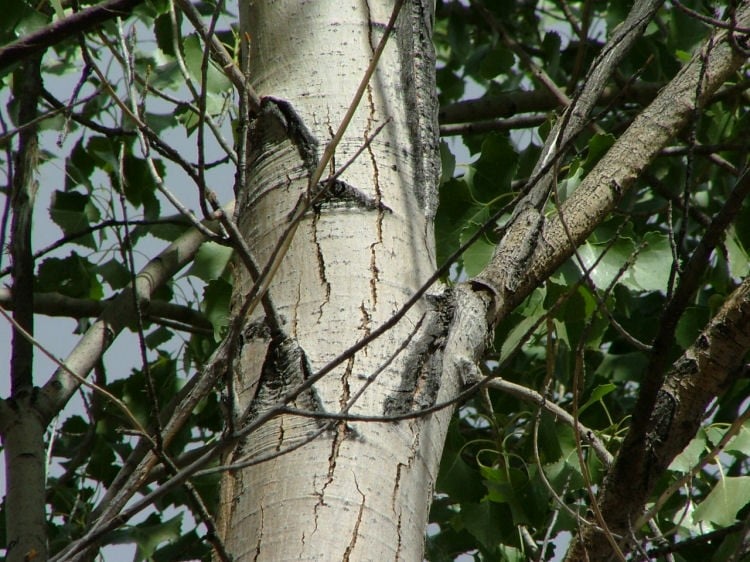 Figure 4. Younger bark7
Figure 4. Younger bark7
 Figure 5. Older bark7
Figure 5. Older bark7
Flowers and Fruits: The tree flowers in drooping catkins (Figure 6), which are 1.55-5.51 inches (4-14 cm) long.6 The flower color is white/cream.7 The fruit is an achene (a small, dry one-seeded fruit) with small hairs that look like cotton when they are in clusters (Figure 7).6 The seed is shaped as an egg capsule, green with light brown tips and splits open into many seeds that resemble cotton. It is dioecious, which means it contains both male and female reproductive parts that are stored in the catkins.
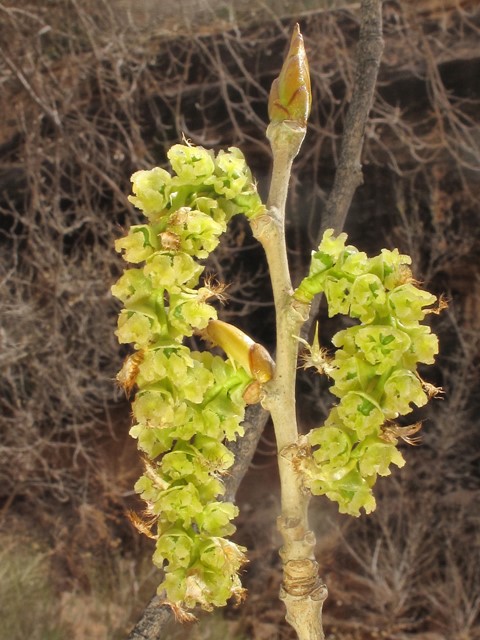 Figure 6. Drooping catkin7
Figure 6. Drooping catkin7
 Figure 7. Fruit in the Cotton Clusters7
Figure 7. Fruit in the Cotton Clusters7
Where it’s from:
Native range: Populus fremontii is a cottonwood native to North America and is found in riparian forest ecosystems, a wetland adjacent to rivers, stream, or water banks and aids in erosion control (Figure 8). Its habitat can be found neighboring chaparrals, valley grasslands, and other various types of woodland vegetation communities. In desert riparian areas, P. fremontii is associated with creosote bush shrubs or deserts transitioning into chaparrals.7 They are distributed throughout Southwest America into Mexico and are most abundant in California in the Sacramento and San Joaquin valleys (Figure 9). Common species found near Cottonwoods in California are valley oak (Quercus lobata), interior live oak (Quercus wislizenii), and California sycamore (Platanus racemosa). Elderberry (Sambucsus mexicana) and California rose (Rosa californica) are common shrubs found in their understory.6 Within these locations, they dominate areas close to water that are on alluvial land and gravel bars of low elevations such as 6500 feet (16981 meters) and below.6 They are also planted along irrigation ditches. Because Fremont Cottonwoods are almost always found near areas of water, they once served as an indicator of water for explorers.1
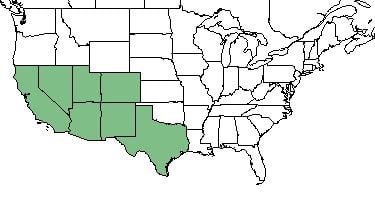 Figure 9. Native range (United States Department of Agriculture)
Figure 9. Native range (United States Department of Agriculture)
Populus fremontii is a foundation species in mature riparian forests because it makes up a huge portion of the biomass and therefore contributes heavily to the overall diversity in the ecosystem.4 It is a pioneer plant species, meaning it is among the first to colonize an area following a flood.3 It requires a sufficient amount of sunlight and moist soil; however, it can withstand sandy or clay like soil as long as there is an adequate amount of water available. When roots are in contact with a permanent water table, it can grow 10-20 feet (3-6 meters) a year, up to a total of 100 feet (30.5 meters) in height and 35 feet (10.7 meters) wide in the crown.7 It is able to withstand occasional flooding, has high tolerance to short-term inundation of cool water, and can survive complete submergence of its roots for a short period of time.4 Freemont Cottonwood prefers areas of 2.5 - 75.8 inches (6.35-198.12 centimeters) of rain annually and temperatures between 5° F (-15°C) and 89.5° F (31.94°C).
Ecological Notes: Populus fremontii has clusters of flowers that bloom during the months of March and April that appear as cotton hanging from the branches. Populus fremontii is a colonizing species that breeds from seed and not asexually. However, it can also grow from its lateral buds if the apical meristem is water damaged, pruned by wildlife, or broken off from weather conditions.6 Because cottonwoods require moist soil to establish and germinate seeds, they only sprout in the spring and summer as this time of the year experiences high stream flows. Spring flooding is necessary for the regeneration of Cottonwoods. This is beneficial because during this time the viability period is shorter, the seed germination is faster, and seeds are dispersed early.6
Populus fremontii can be vulnerable to mistletoe as well as trunk and branch canker during periods of drought.2 Populus fremontii contribute to ecological diversity, stabilization of banks, improving the quality of water of an area, providing shade, and reducing floods.1 It is one of the most significant plant species to western wildlife as it is a major overstory tree. In addition, it is a main source of the beaver, Castor canadensis, diet and building of habitat, although beavers have been reduced in riparian habitats due to hunting.6 Deer, elk, moose, and rabbits also feed on the tree’s shoots and stems.1 Riparian forests have a high population of birds that feed on cottonwoods buds and catkins including insects, grouse, and quail.7 When the tree begins to die and goes hollow, species such as bears, bats, and 40 different species use the hollows for hibernation.
What we use it for:
The sap is sweet and starchy, and it can be eaten raw or cooked. The bark is edible and can be scraped off; in fact, it can be cooked into soup noodles or act as a substitute for flour, which is what some Native Americans and horses relied upon during times of hardship. The bark can also be used to treat cuts, bruises, burns, abrasions, body odor due to sweating, and can be applied to horses with sores due to chafing.6 The tree contains the active biochemical ingredients salicin and populin, which are the precursors of aspirin. This was used to treat fevers or act as an anti-inflammatory agent by Native Americans. Leaf buds can be turned into an ointment and used to treat burns and other skin irritations. A tree poultice can aid with muscle pain, sprains, and swollen joints.6 When taken internally the plant may help with indigestion, reduction of fever, act as an anti-inflammatory agent, getting rid of worms and intestinal parasites, and coughs from colds. This plant also acts as a defense against heart problems, scurvy, back pain, urinary tract infections, excessive menstruation, acts as a diuretic, and can be used to help prevent premature birth. Historically, several Indian tribes used the twigs and roots of this tree to make baskets, and some tribes used the fiber from the inner bark to create clothing or padding for baby cradles.6
References:
Images
Figure 1: https://www.fireflyforest.com/flowers/2182/populus-fremontii-fremont-cottonwood/
Figure 2: https://www.stevenkharper.com/fremontcottonwood.html
Figure 9: https://plants.usda.gov/core/profile?symbol=POFR2
Biographer: Mia Mora ‘21, BIOL 238: Evolution, Ecology, & Behavior, Spring 2019